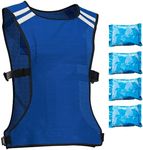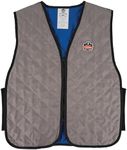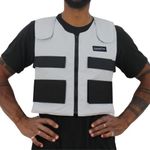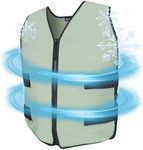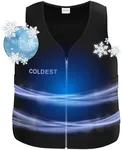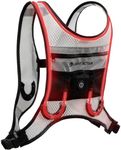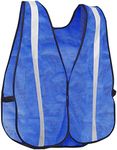Buying Guide for the Best Cooling Vests
Cooling vests are designed to help regulate your body temperature, especially in hot environments or during intense physical activities. They can be particularly useful for athletes, outdoor workers, or individuals with medical conditions that make them sensitive to heat. When choosing a cooling vest, it's important to consider several key specifications to ensure you select the best fit for your needs.Cooling MethodThe cooling method refers to how the vest provides its cooling effect. There are several types, including evaporative, phase change, and ice pack vests. Evaporative vests use water evaporation to cool the body and are lightweight but require re-soaking. Phase change vests use special materials that absorb heat and can maintain a consistent temperature for longer periods. Ice pack vests use frozen gel packs and provide intense cooling but can be heavier. Choose based on your activity level and duration of use; for example, evaporative vests are good for short-term use in dry climates, while phase change vests are better for longer periods.
WeightThe weight of the cooling vest is crucial for comfort and mobility. Lighter vests are generally more comfortable and less restrictive, making them suitable for activities that require a lot of movement, such as sports. Heavier vests, often due to ice packs or phase change materials, provide more intense cooling but can be cumbersome. Consider your activity level and how long you will be wearing the vest; if you need to move freely, opt for a lighter vest.
Cooling DurationCooling duration indicates how long the vest can provide effective cooling before needing to be recharged or refrozen. Evaporative vests typically last a few hours, while phase change and ice pack vests can last longer, depending on the environment and activity level. If you need cooling for extended periods, such as for a full work shift or a long outdoor event, choose a vest with a longer cooling duration.
Fit and AdjustabilityA good fit is essential for comfort and effectiveness. Look for vests with adjustable straps or sizing options to ensure a snug fit that allows for proper cooling. An ill-fitting vest can be uncomfortable and less effective at cooling. Consider your body shape and size, and choose a vest that offers adjustability to accommodate different layers of clothing or changes in body size.
Material and BreathabilityThe material of the vest affects its comfort and breathability. Lightweight, breathable fabrics like mesh or moisture-wicking materials can enhance comfort, especially during physical activities. Some vests also have antimicrobial properties to reduce odor. If you plan to wear the vest for extended periods or during intense activities, prioritize breathable and comfortable materials.
Ease of UseEase of use refers to how simple it is to prepare and maintain the vest. Evaporative vests require soaking in water, while ice pack vests need freezing. Phase change vests may need refrigeration. Consider how easy it is to recharge the cooling elements and how often you will need to do so. If convenience is a priority, choose a vest with a straightforward preparation process.
